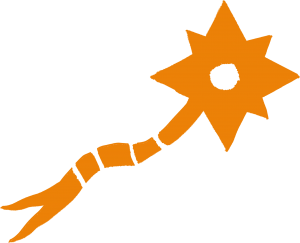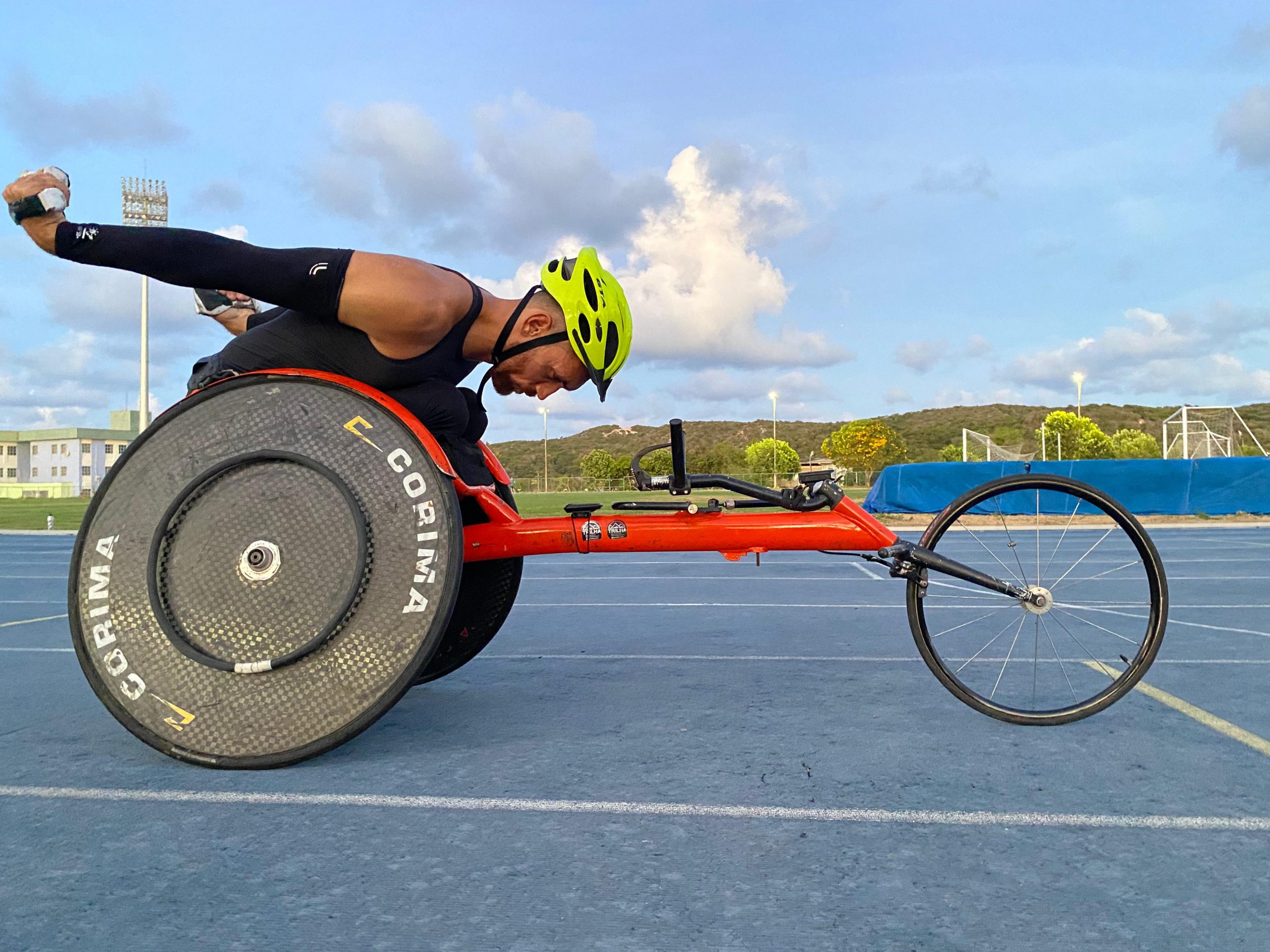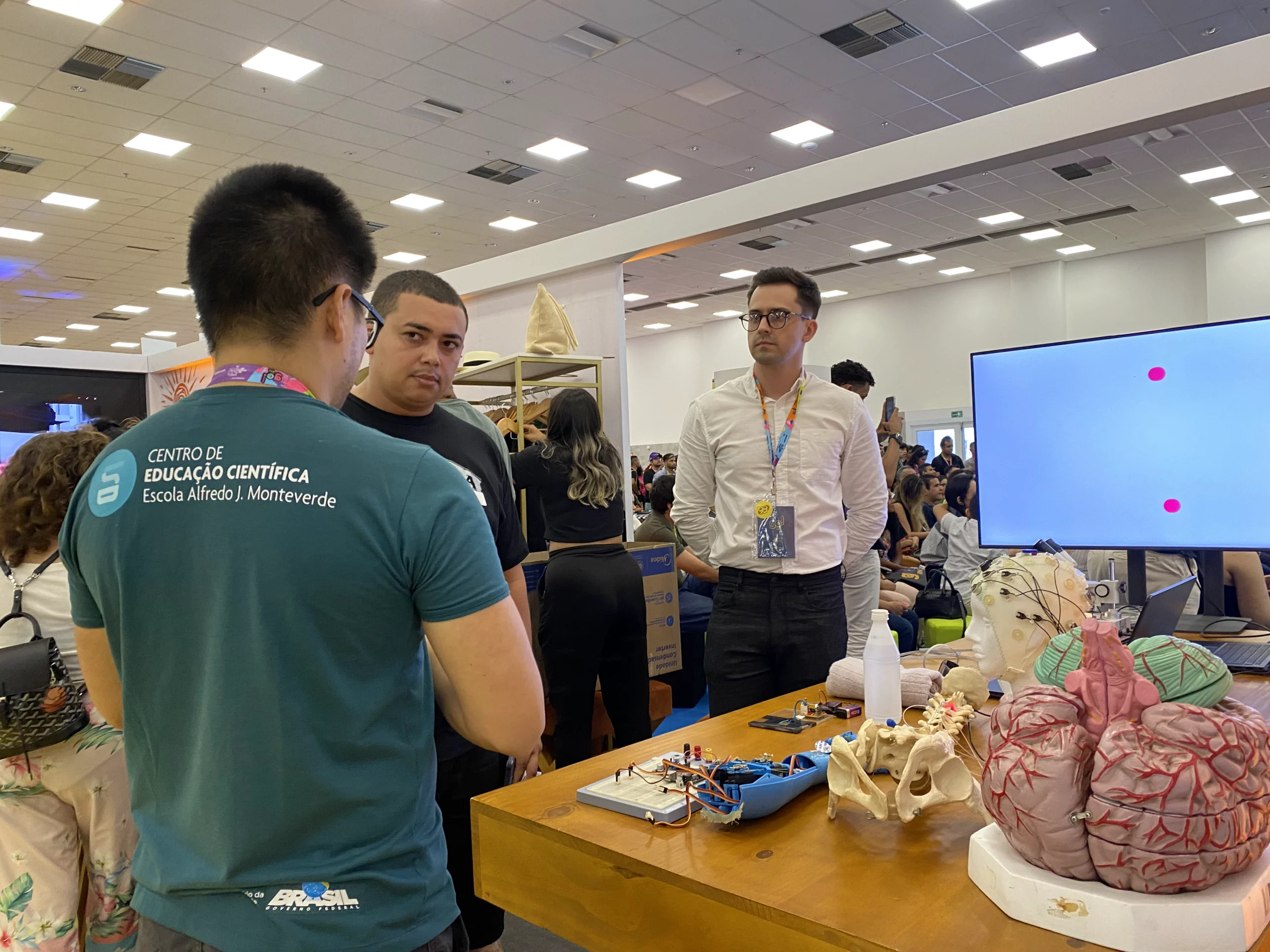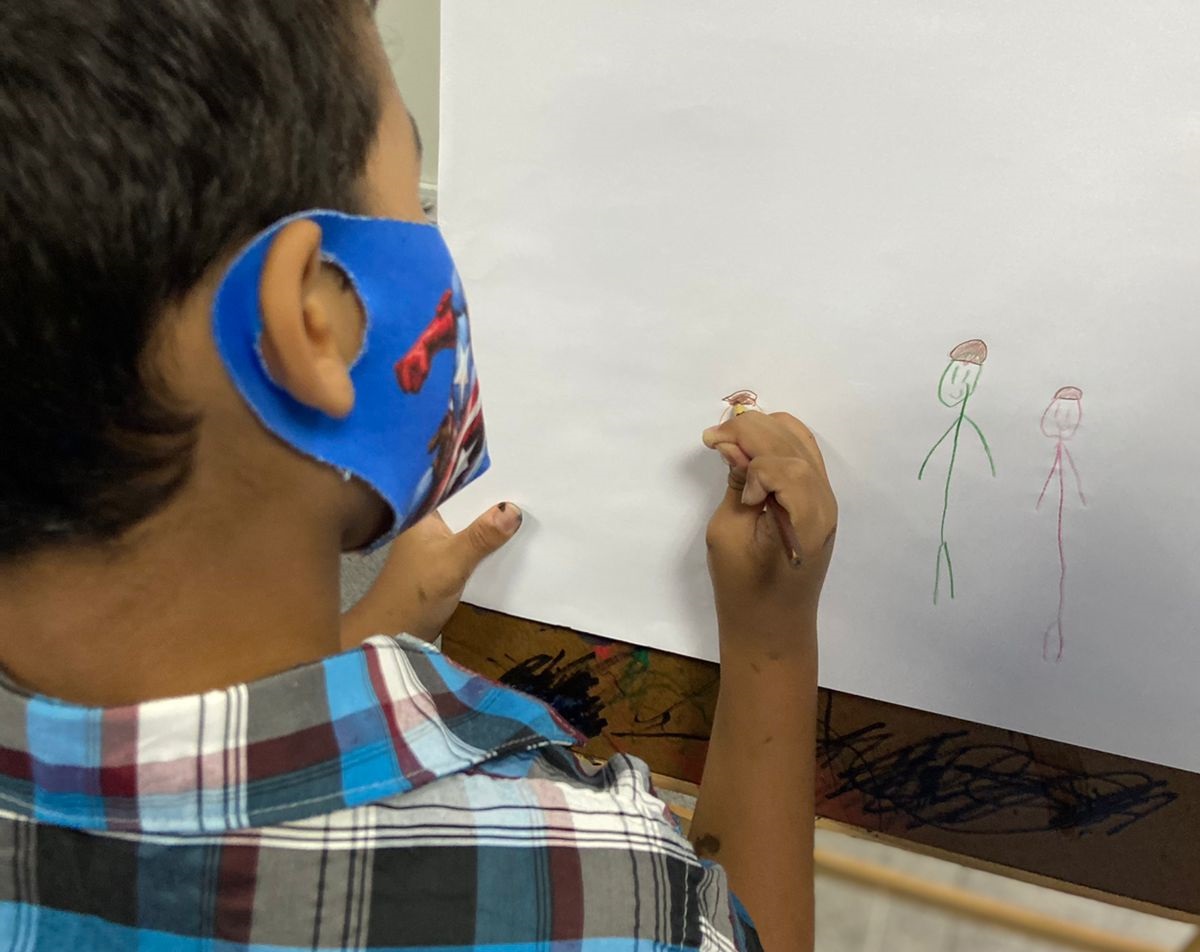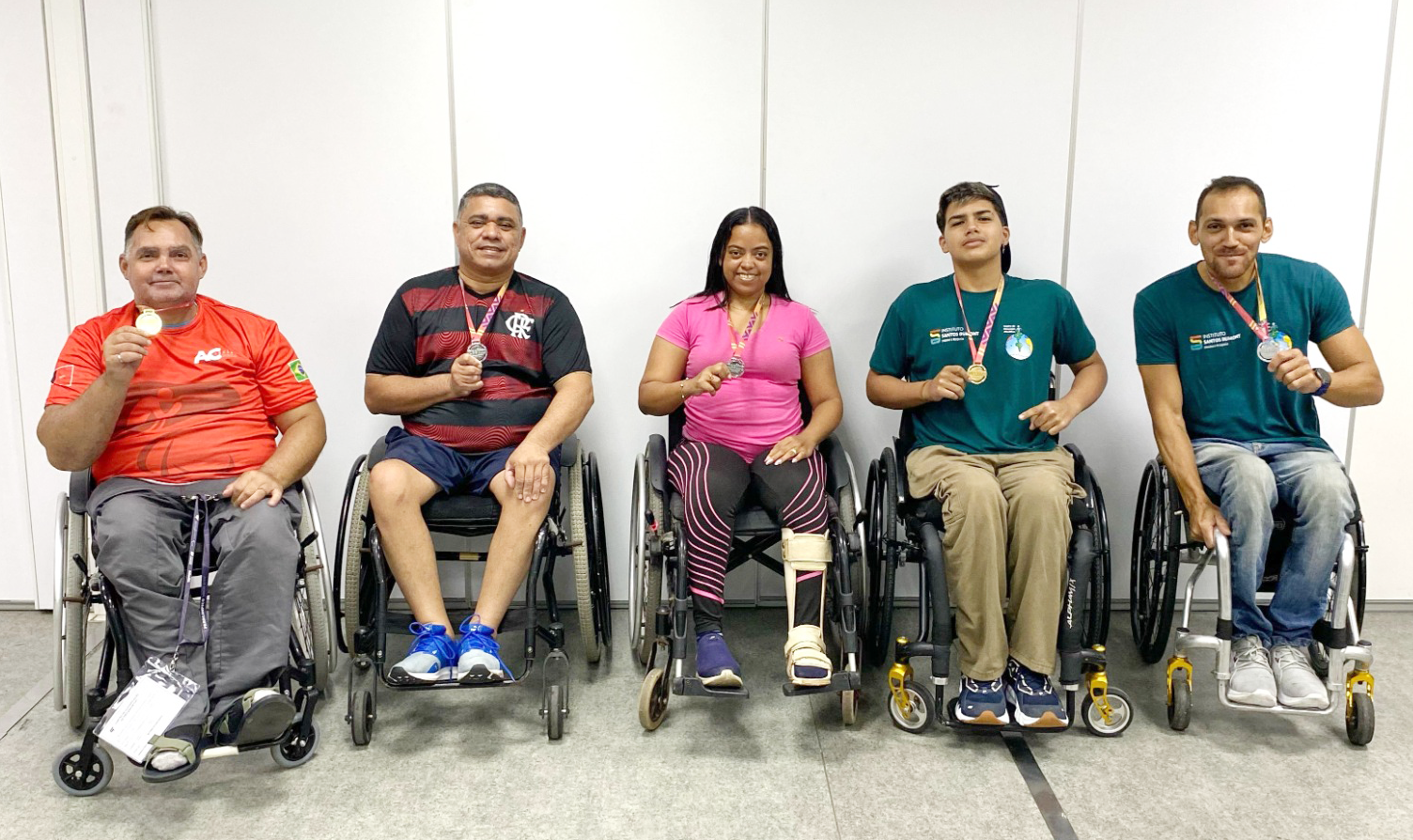The curriculum matrix of Postgraduate Program in Neuroengineering of ISantos Dumont Institute (ISD) consists of mandatory and optional disciplines aimed at training a versatile professional in interface between engineering and neuroscience. This structure was designed to overcome existing barriers between exact, biological and human graduations.
Check below the disciplines and their respective syllabi, which also are available at Sucupira Platform HERE (Select: Higher Education Institution: 33280010 – Alberto Santos Dumont Teaching and Research Institute/ Program: Neuroengenharia – 33280010001P2).
Description:
The discipline of neuroanatomy covers the anatomical, structural and functional aspects of the nervous system, with emphasis on the study of the central (brain and spinal cord) and peripheral nervous systems. The anatomy of the nervous system will be addressed both at the cellular and systems level (somatosensory, visual, auditory, olfactory, gustatory, motor, vestibular, limbic and autonomic, memory and learning). In this way, the general objective of the discipline is to characterize the nervous system, in all its components, in terms of systems and their macro and micro anatomical structures in a theoretical and practical way, consisting of lectures, discussion of texts, carrying out activities practices and presentation of seminars related to the topics discussed.
Thematic content
- Principles and fundamentals of functional neuroanatomy
• Brain • Spinal cord • Peripheral nerves - Cell anatomy: morphological, physiological aspects and functional interaction
- somatosensory system
- visual system
- auditorium system
- Olfactory and gustatory systems
- engine system
- vestibular system
- limbic system
- memory and learning
- autonomous system
Description:
The discipline's main objective is to characterize the physiological and functional bases of the nervous system. It will consist of lectures, discussion of texts and questions raised by teachers.
Thematic content:
- Neuron cytology and ion channels
- Conceptual bases of electrophysiology
• Membrane potential • Bioelectrogenesis • Neural signal propagation • Synapse and synaptic integration • Neurotransmitters - Sensory Processing
• Sensory transduction and encoding • Stimulus modalities • Sensory systems: touch, pain, vision, hearing, taste and smell • Cortical representation of the senses - Planning, execution and motor control
• Muscle contraction • Reflex, voluntary and autonomous movements • Planning and execution of movements • Learning and motor control • Major motor disorders - Autonomic nervous system, homeostasis and hypothalamus
- Neurophysiological bases of emotions; limbic system
- Neural bases of cognition
• Attention • Memory and learning • Executive control
Description:
Algorithm definition and introduction to computer programming. git. Building a collaborative environment. Handling input and output data. Conditional structures. Repeating structures. Vectors. Pointers. Functions. Function Overloading. Class. Heritage. Polymorphism. Operator overload. Execution of projects associated with Neuroengineering.
Skills:
- Domain of Neuroscience and Biomedical Engineering – Apply engineering knowledge in neuroscience;
- Scientific Domain – Research and carry out experiments with scientific rigor to solve problems, seeking innovation.
- Creation and Development of Applied Systems – Design, develop and implement computational systems aiming at the integration of physical and logical resources.
- Teaching Skills – Develop pedagogical mastery associated with knowledge of neuroengineering.
- Teamwork – Develop the ability to work in a collaborative environment.
- Society Transformation – Using the acquired knowledge to cause social transformations.
- Ethical Training – Develop professional activities based on ethical principles.
Learning Objectives:
Develop programming logic through a structured and object-oriented programming language. – Conceptualize variable, decision structure, repetition structure and vector in the context of algorithms. – Implement simple algorithms using a programming language. – Abstract dynamic data structures into a computational memory. – Build systems applicable to neuroengineering. – Identify the most appropriate framework for solving neuroengineering problems.
Thematic content:
- basic computer architecture
- Hardware elements (memory, processor, input/output devices)
- Numbering systems and number bases
- Basic organization of a computational environment (Hardware, Operating System, compilers, programs)
- Introduction to programming
- Algorithms
- Basic aspects of programming languages
- Neuroengineering projects
- Project Management Tools
- Git: Workflow in a collaborative environment.
- Programming language
- Constants, Variables, and Assignments
- Data input/output and arithmetic operators
- Logical expressions and conditional statements
- Repeating structures • Data structures, vectors, and matrices
- Modularization of programs (procedures and functions)
- Records
- pointers
- file manipulation
- Function Overloading
- Class
- Heritage
- Polymorphism
- Operator Overload
- Execution of projects associated with Neuroengineering
Offering: Annual - 2nd Semester
Description:
Introduction to continuous and discrete signals. Sampling. Characterization of time-invariant linear systems. Fundamentals of data acquisition and noise. Fourier analysis of continuous and discrete signals. Analysis and design of filters. Laplace transform and Z transform. Transduction methods. Applications in neural data analysis.
Skills:
Mastery of Neuroscience and Biomedical Engineering – Knowing and mastering the main techniques for analyzing biological signals;
Scientific Mastery – Be able to understand and use the techniques used in the state of the art of data analysis.
Creation and Development of Applied Systems – Design, develop and implement computational systems aiming at the integration of physical and logical resources.
Teaching Skills – Develop pedagogical mastery associated with knowledge of neuroengineering.
Teamwork – Develop the ability to work in a collaborative environment.
Society Transformation – Using the acquired knowledge to cause social transformations.
Ethical Training – Develop professional activities based on ethical principles.
Learning Objectives:
Know and understand the main signal processing techniques applied to biological data. – Use signal processing libraries in MATLAB or python. – Develop pipelines for signal processing in python. – Ability to choose methods best suited to signal properties.
Thematic content
- Acquisition and sampling of biological signals
- Continuous and discrete signals; • Signal classification
- Linear and time-invariant systems
- Noise
- Fourier Analysis
- Filters: ideal filters, filter types, continuous and discrete filters
- Filter design
- Laplace Transform and Z Transform
- Applications and analysis of neural signals
- wavelets
- Inter-spike Interval and PSTH
- connectivity analysis
Workload: 60 hours
Description:
The subject theoretically supports aspects related to the stages of histological processing and types of microscopy. The discipline also has practical classes directed to the use of the microscope, as well as software for analysis of histological data such as: Volume, number of cells, relative optical density, 3D reconstructions and branching processes.
Skills:
- Domain of Neuroscience and Biomedical Engineering – Apply knowledge of image analysis in scientific studies.
- Scientific Mastery – Analyze and interpret histological data with scientific rigor to solve problems.
- Teaching Skills – Develop pedagogical mastery associated with knowledge of neuroengineering.
- Teamwork – Develop the ability to work in a collaborative environment.
- Society Transformation – Using the acquired knowledge to cause social transformations.
- Ethical Training – Develop professional activities based on ethical principles.
Learning Objectives
The general objective of the course is to provide a theoretical-practical approach through which the student will develop skills related to extracting and interpreting data from histological images and how to use them in their research.
Thematic content
- Histological processing: Overview (Theoretical)
• The stages of histological processing • Systematic sampling of tissue collection • Types of stains and histochemistry • General concepts of microscopy • Possible sources of error arising from processing • Morphometry vs Stereology vs Image analysis • Neuroanatomy open science: Open databases • Examples of articles using the software and analysis that will be covered in the course - Acquisition of images in the microscope (Practice)
• Microscope components • Using the microscope for light microscopy • Using the microscope for fluorescence microscopy • Adjusting lighting and camera settings • Acquiring 2D mosaics • Acquiring 3D stacks - Image analysis in imageJ software (Practice)
• Insertion of images and stacks in the program • Image scale calibration • Saving coordinates in the ROI manager • Area measurement • Manual counting of cellular profiles • Automatic counting of cellular profiles by image segmentation • Relative optical density • 3D reconstruction of blocks of tissue • Pixel per line variance analysis • Kymographs - Stereological analysis in the StereoInvestigator software (Practice)
• StereoInvestigator tools and operation • Cavalieri Estimator: Regional volume estimation • Optical fractionator: Total cell number estimation • Nucleator: Somatic and nuclear volume estimation • Sholl analysis - Image analysis in iLastik software (Practice)
• Machine learning applied to image analysis • Automatic counting of cell profiles • Advantages and disadvantages of automatic classifiers
Workload: 30h
Total Credits: 2
Description:
Organization of data in neuroscience and application of computational models and analytical tools Database.
Database modeling; Database query languages; Architecture of database systems; Applications of database systems; Biological databases; Medical database; Database technology trends; Database applications using – Phisyonet; Database Design – Case Study.
Workload: 45 hours
Total Credits: 2
Description:
Biostatistics is a fundamental tool for the development of basic definitions for a large part of modern biological theories, covering the planning of biological experiments, summarization and analysis of data from experiments and the interpretation and inference of results. The discipline will prioritize understanding ideas rather than memorizing formulas.
The general objective of the discipline is to allow the student to manage statistical methods that help them in the correct interpretation of the data generated by the experimental practice, based on expository classes, always associated with the performance of activities of fixation of the contents taught in traditional software of statistical analysis, such as SPSS, or even with free software (PSPP), using examples that allow the student to identify which type of statistical analysis best fits their own results.
Thematic content
- Experimental research planning
Introduction: Origin, biostatistics • Experimental research planning: Scientific methods (deductive, inductive, experimental…) • Scientific research: Structure (decision, execution, analysis, writing) • Research formulation: Feasible, new, ethical, interesting • Outlines of research studies: Observational, experimental and meta-analysis research
Introduction to SPSS and PSPP
Probability: Random experiment, sample space, mutually exclusive examples (or) non-exclusive examples (e) arrangement and combination • Sample size and randomization: probabilistic and non-probabilistic samples, errors in the sampling process, calculation of sample “n”, randomization methods • Data collection, organization and analysis: accuracy, precision and bias (selection, measurement…) - Introduction to descriptive statistics
Study of statistical variables • Frequency distribution: data ordering, total amplitude, number of classes, histogram, stem and leaf • Frequency distribution parameters: measures of central tendency (mode, median, mean (arit., geom., harmonic) )), measures of dispersion (total amplitude, variance, standard deviation...), measures of skewness and kurtosis (flattening), measures of position (quartile, decile, box plot, outlier), standard error of the mean, confidence interval • Probability distribution: Gaussian, Bernoulli (binomial), and Poisson Statistical inference and hypothesis testing: H0, H1, type 1 and type 2 errors - Parametric hypothesis tests
Student's t test: for independent samples, for paired samples • Correlation and simple linear regression: scatterplot, r-value; coefficient of determination (r²), equation of the line - Non-parametric hypothesis tests
Chi-square distribution • Normality tests: Kolmogorov-Smirnov – KS, and Shapiro-Wilk • Diagnostic Screening Tests – Screening test: sensitivity and specificity • Wilcoxon-Mann-Whitney U test (WMW) • Wilcoxon t test • Tables 2×2 - Multivariate analysis
Analysis of Variance (One way Anova) (F Test) • Two way Anova • Repeated measures Anova • Kruskal-Wallis Test (H Test) • Friedman Test • Factorial experiments (factorial / multivariate analysis)
Description:
Ethics, morals and law; bases of bioethics: origin, concept and principles; ethics and human rights; situations of conflicts of values and ethical principles; research ethics; bioethics and interdisciplinarity; current ethical dilemmas; neuroethics; social responsibility in scientific research.
Main goal:
Discuss the interrelations between the fields of bioethics and scientific research. Specific Objectives: 1) Recognize the conceptual foundations of bioethics and its principles 2) Identify situations involving ethical dilemmas in scientific research 3) Discuss current ethical dilemmas, including neuroethics.
Thematic Contents:
- Introduction to Bioethics
• Ethics, morals and law • Origin, concept, sources of Bioethics • Bioethics principles • ethics and human rights. - Identifying situations of conflict of values and ethical principles: video sessions
- Today's ethical dilemmas
• Science and Technology • Medical Ethics • Genetics • Human Reproduction • Neurosciences • Social Ethics - Ethics in research – Ethical principles in research involving human beings – Ethical limits for the use of animals in scientific research
- Neuroethics
- Social responsibility in scientific research.
The contents will be worked through the following methodologies: expository dialogued classes, seminars and discussions based on problem situations, films and texts involving the related theme. The evaluation process will consist of two instruments, with equal weights (5.0 + 5.0): collective production, by the seminar presentation group and individual production of narrative, theme, style and form chosen by the master's student, on one of the thematic contents III, IV, V and VI.
Identification of existing risks at work and in the environment, with emphasis on promoting individual and collective health. General biosafety rules. Risk classification. Main causes of accidents and individual and collective prevention and protection measures. Conduct and laboratory rules. Standard operational procedure. The discipline aims to train the student on the importance of health promotion, so that he can identify the physical, chemical, biological, ergonomic and other accidents to which laboratory professionals are exposed, in addition to identifying solid and liquid products and waste of health services, from their generation to the appropriate final destination. The discipline will consist of theoretical and practical classes in different laboratories, permeated by reading and discussion of texts related to the proposed themes. Students will be evaluated through seminars, delivery of practical class reports and other proposed work.
Thematic content
- Introduction to Biosafety: General concepts, importance and legislation.
- Notions of chemical and biological safety in the laboratory.
- Conduct in the laboratory: safety levels.
- Protection (individual and collective) and accident prevention: risk diagnosis and prevention. Personal Protective Equipment (PPE) and Collective Protective Equipment (CPE).
- Handling, storage and disposal of potentially pathogenic chemical and biological agents.
- Safety standards in areas where contagious, chemical and radioactive materials are handled. Biological, chemical and physical hazards.
- Laboratory practices
- Workspace organization
- Proper use and care of equipment
- Standard Operating Procedure (SOP)
Description:
The course aims to describe and analyze different aspects of cognition in rodents and primates, establishing their neural correlates. Classes will consist of discussions of book chapters and recent articles related to the subject's thematic content.
Skills
- Scientific Domain – Research in the indicated materials to expand knowledge of the subject discussed in the discipline.
- Teaching Skills – Develop pedagogical mastery associated with knowledge of neuroscience, with emphasis on cognitive processes, and neuroengineering.
- Teamwork – Develop the ability to work in a collaborative environment in a multidisciplinary environment.
- Transformation of Society – Using the acquired knowledge to promote social transformations.
- Ethical Training – Develop professional activities based on ethical principles.
Learning Objectives
Develop students' knowledge about cognition in different animal species. – Conceptualize the main topics about cognition, forming a framework of knowledge that will guide students in the following disciplines of the program. – Stimulate and guide students in reading and discussing articles and book chapters on animal cognition. – Draw a parallel between animal cognition and applicability in research that uses humans as experimental subjects.
- Thematic content
- Cortex and cognition
- Perception and Attention
- memory and learning
- cognitive maps
- sensorimotor integration
- Planning, decision-making and strategic behavior
- emotions
- Communication and language
Description:
Higher education in the 21st century. The future of higher education. Engagement of students in face-to-face classes. Classroom management. Effective course creation for student success. Collaborative learning strategies. Active learning. Interactive Lecture. Simulation. What is science. The scientific method. The Experimental Method. The Scientific Discussion. The steps of a scientific research. Ethics in scientific research. Methods for reading and analyzing articles in Neuroengineering. Research project. Importance of Curriculum vitae, Communication of scientific information considering the aspects of speech, writing, audiovisual material and posture in public presentations, meetings, panel exhibition, seminars, classes and others.
Skills:
Domain of Neuroscience and Biomedical Engineering – Apply engineering knowledge in neuroscience
Scientific Domain – Research and carry out experiments with scientific rigor to solve problems, seeking innovation
Creation and Development of Applied Systems - Design, develop and implement computational systems aiming at the integration of physical and logical resources
Teaching Skills - Develop pedagogical mastery associated with knowledge of neuroengineering
Teamwork – Develop the ability to work in a collaborative environment
Society Transformation – Using the acquired knowledge to cause social transformations
Ethical Training – Develop professional activities based on ethical principles.
Learning Objectives:
• Understand the elements of creating a successful discipline
• Identify learning design models
• Review the alignment of objectives, assessments and learning resources
• Apply principles of engaging teaching activities
• Analyze best practices to facilitate collaborative learning
• Understand the theories and characteristics of active learning
• Understand the methodological procedures of the Interactive Lecture Class
• Putting the Interactive Lecture into practice in order to facilitate student learning
• Conceptualize and characterize simulation as a teaching methodology
• Evaluate in which learning situations the types of simulation can be applied
• Define science and scientific methods
• Describe the stages of a scientific research
• Select appropriate scientific articles for neuroengineering, analyzing their relevance to the area
Thematic content:
- Didactic
• Higher Education in the 21st Century: • Perspectives on Teaching and Learning • Students at the Center • Focus on Faculty • The Future of Higher Education: Overview • The Future of Higher Education • Global Connections • Focus on Real-World Learning • Increased workplace readiness • Student Engagement in Face-to-Face Classes: How to Recognize Student Engagement • Intentional and Reflective Practice • Social Trust for Student Engagement • How to Engage Students with Course Content • How to Support Student Engagement • The face-to-face classroom management: Introduction to face-to-face classroom management • How to address common behavioral problems in the face-to-face classroom • Intentional planning for classroom management • How to address other classroom management issues • Recognize students as Individuals • Effectively Designing Disciplines for Student Success: Identifying Desired Outcomes • Determining Assessment Evidence • Planning Learning Experiences and Instructions • Collaborative Learning Strategies: What Is Collaborative Learning? • Benefits of Collaborative Learning • Facilitating Collaborative Learning • Collaborative Learning Activities • Active Learning: Introduction: What is Active Learning? • Theories and characteristics of active learning • Benefits and challenges of active learning • Strategies for active learning • Interactive Lecture: What is an interactive lecture? • Methodological procedures • Simulation: What is simulation? • Methodological procedures - Scientific methodology
• The Scientific Method • What is research? • Concept of scientific research • Research: observational, experimental and non-experimental (quasi-experimental) • Research: exploratory, descriptive and explanatory • Research in human beings and Experimental Animals • Research in Human Beings: Concept and ethical precepts • The Treaty of Helsinki and its updates • Informed consent • Research on experimental animals: Concept and ethical principles • Rules for the use of animals in experimentation • The stages of scientific research • The choice of theme and the formulation of the problem • Theme : the justification, the relevance, the importance • Problem: the doubt, the question • The construction of the hypotheses • The relations between theme, problem and hypothesis • The theoretical framework • Research project • The purposes of a research project • The structure elaboration of a research project: title page, introduction, general and specific objectives, justification, methods and schedule • The research project and the Research Ethics Committee • Scientific report • Adequacy to ethical requirements and precautions to be taken • Writing and presenting a research project
Credits: 3
- Teaching-learning process
- Didactics and teaching practice in higher education
- Oral presentation preparation
- Preparation of audio-visual material, posture and speech for researchers in the same area and presentation preparation for high school students
- Preparation and exhibition of a poster with information about the research project or scientific article
- Discussion of methods and techniques for making the presentation effective
Skills:
- Recognize education as a transformative force to promote human dignity and rights, to eradicate poverty and deepen sustainability, with respect for human diversity, international solidarity and shared responsibility
- An attitude open to the transformation of knowledge and practice itself
- Choice of interactive strategies for the construction and socialization of knowledge, according to identified learning needs, considering sociocultural diversity
- Use of work challenges to stimulate and apply scientific reasoning, formulating questions and hypotheses and seeking data and information, with emphasis on the problematization methodology
- Critical analysis of sources, methods and results, in order to evaluate evidence and practices for the promotion of global citizenship
- Identification of the need to produce new knowledge, based on the dialogue between the practice itself, social demands, scientific production and technological development available
- Favoring scientific and technological development aimed at meeting collective needs, through the dissemination of best practices and support for carrying out research of interest to society
- Learning interprofessionally, based on reflection on one's own practice and through the exchange of knowledge with professionals from other areas of knowledge, to guide the identification and discussion of problems, stimulating the improvement of collaboration for global citizenship.
The general objective is to insert graduate students in the various programmatic actions developed by ISD, so that they can sharpen their sense of social responsibility and put into practice the commitment to citizenship. – It also aims to train graduate students to implement extension actions in an integrated way to the curriculum, as established in the National Education Plan (PNE) in its goal 12, in strategy 12.7, "to ensure, at least, 10% of total curricular credits required for graduation in university extension programs and projects, orienting its action, as a priority, towards areas of great social relevance”. – Having as a reference the methodology of problematization with the Arch of Maguerez, the discipline prioritizes experiences in the community that favor the development of a reflective attitude on the social responsibility of science and collaborative skills for social transformation towards a more just, peaceful world , tolerant, inclusive, safe and sustainable.
Unit I – Think Globally, Act Locally
• Education for Global Citizenship
• Sustainable Development Goals (SDGs) of the UN 2030 Agenda
• ISD's Education Program for Social and Community Action
• Social responsibility of scientific research
• Cultural competence and education for global citizenship
• Education and Interprofessional Work
• Problematization Methodology with Maguerez Arch.
• Dispersion module in which students will join the programmatic actions of their choice, under the field supervision of the respective coordinators.
• Elaboration of hypotheses for solving community problems, based on available resources
• Project management and evaluation tools
• Action project aimed at overcoming the identified need(s)
Unit III - Execution of application projects to the identified reality
• Module for executing practical application projects on the need/problem identified with the community involved
• Self assessment (individual portfolio)
• Presentation of the results obtained and the project evaluation plan
- Domain of Neuroscience and Biomedical Engineering – Apply engineering knowledge in neuroscience;
- Scientific Domain – Research and carry out experiments with scientific rigor to solve problems, seeking innovation.
- Creation and Development of Applied Systems – Design, develop and implement computational systems aiming at the integration of physical and logical resources.
- Teamwork – Develop the ability to work in a collaborative environment.
- Society Transformation – Using the acquired knowledge to cause social transformations.
- Ethical Training – Develop professional activities based on ethical principles.
- Learning Objectives
- Present general concepts about entrepreneurship and innovation, as well as concepts related to them, such as entrepreneur and innovation ecosystems. – Identify opportunities to create new businesses, products and services. – Understanding the concept of entrepreneurship and innovation linked to the new challenges experienced by entrepreneurs in creating disruptive businesses. – Provide knowledge of the processes and techniques needed to open new businesses, from the conception of the idea to the implementation of a minimum viable product (MVP). – Develop the ability to identify threats and opportunities in the creation of innovative businesses. – Develop the ability to evaluate the performance of innovative businesses.
Description:
The objective of the course is to present to the student knowledge about Immunology and Cell Biology in physiological and pathological conditions and, mainly, in the context of the tissue response to the implantation of medullary and brain electrodes. Understanding how central nervous system cells originate, studying cell content and the role of neuron and glial cells, detailing the types and mechanisms of cell death, introducing the innate and adaptive immune system, understanding biocompatibility, notions of techniques of microscopy and molecular biology.
The discipline will consist of expository and practical classes and discussion of scientific articles related to the proposed themes. The evaluation system will be based on discussions in the classroom, presentation of seminars related to the topics covered in the discipline and reports of practical classes.
Thematic content:
- Origin of central nervous system cells
• Neurons • Glial cells - Cytoplasmic organelles: structure and function
• Cell membrane • Cytoskeleton • Ribosomes • Endoplasmic reticulum (smooth and rough) • Golgi apparatus • Lysosomes/Vacuoles • Peroxisomes • Mitochondria • Chloroplasts • Centrioles • Nucleus - Protein production mechanisms
• Transcription • Translation • Post-transcriptional and post-translational mechanisms - Types and mechanisms of cell death
• Necrosis • Apoptosis • Necroptosis • Pyroptosis - innate immune system
• Activation mechanisms • Action mechanisms - adaptive immune system
• Activation mechanisms • Action mechanisms - Biocompatibility
• Biocompatible materials • Inflammatory response • Anti-inflammatory response - Notions of microscopy
• Types of microscopes • Microscopy techniques - Practices in cell biology
• Real-time PCR
Description:
The growing increase in basic and clinical research activities in Brazil will lead to the consequent approximation of these two environments and their researchers. Society, through development agencies, is increasingly selective in supporting projects that plan the applicability of their experiments in the basic area in clinical research. The objective of this discipline is to introduce the student to the integration environment between basic research and clinical research in neurosciences and to demonstrate the tools and processes that researchers must know in order to be able to participate in this environment: Demonstrate the process and methodologies that are used in the course of from research to its application in the diagnosis and treatment of neurological diseases. Present issues arising from medical applications that lead to basic research (reverse translation). Present how research funding agencies, public and private, see these translational research initiatives and how research institutes and universities are preparing; Present and discuss research projects in neurosciences, already in the final phase, which are currently used in the diagnosis or treatment of neurological diseases; Discuss neuroscience projects that started with thinking about the integration of basic research and clinical research.
Thematic content:
- Assistive Technology Overview
• Concepts and nomenclatures • Phases of translational research • Translation and reverse translation - Perspectives in Assistive Technology Research
• Neuroengineering in neurology and neurosurgery • Examples of translational products - Development of basic (pre-clinical phase) and clinical research (Phases I to IV)
- Technological innovation and patents
• Intellectual property and intellectual property law • Patents and industrial creations • Brazilian legal bases and the international patent system • INPI: Role and operation. - The role of Development Bodies and Industry: history, current affairs and perspective.
Description:
Artificial Intelligence (AI) an area of Computer Science, but which integrates several other sectors, with the purpose of developing computational methods and devices that have or simulate the human capacity to solve problems, decide, act, create, interpret, speak, or , in general, be smart.
The general objective of the discipline is to provide a theoretical and practical vision of some of the most fundamental concepts and techniques used in AI, being based on expository classes, always associated with the performance of activities of fixation of the taught contents, from the discussion of texts used as support. The evaluation will consist of discussions in the classroom, resolution of exercises, always due in the next class, and presentation of seminars related to the topics covered in the course.
Thematic content
- basic definitions
The concept of intelligence • Possibilities for defining AI • The Turing Test • Strong AI vs. Weak AI: Searle and the Chinese Quarter Argument - AI history
Prehistory of AI (automata) • AI gestation (1943-1956) • Knowledge-based systems (1969-1979) • Return of neural networks and recent events (1986-present) - Scientific bases of AI
Philosophy • Mathematics • Psychology • Computing • Linguistics • Relationships between AI and Cognitive Sciences • Relationships between AI and Philosophy of Mind - AI applications
Natural Language Processing • Intelligent Database Search • Expert Systems • Theorem Proving • Robotics • Automated Programming • Pattern Recognition - Knowledge representation
Considerations about knowledge representation • Using predicate logic • Representing knowledge through rules • Semantic Networks • Representing knowledge through frames - Artificial neural networks
History of Neural Networks (RNs) • Basic models of RNs • Delta Learning Algorithm • Generalized Delta Learning Algorithm • Perceptrons • Backpropagation Algorithm • Kohonen maps • Neural networks as a model
Description:
Introduction and history of the brain-machine interface (BMI) and its derivations: brain-computer interface (BCI), human-machine interface (HMI), human-computer interface (HCI), brain-neural-machine interface (BNMI), and brain-machine-brain interface (BMBI). Most used devices for data acquisition and their differences. Restorative/assistive ICM. The main objective of the course is to introduce students to various brain-machine interface techniques, to show the difference between them and their applicability. Students are encouraged to draw their own conclusions about the techniques and choose the best one for each situation, as well as having the opportunity to carry out practical experiments.
Thematic content:
- Overview of Neuroengineering in Brain-Machine Interfaces
- Introduction and history of human-machine interfaces.
- Types of devices used and technological differences, types of signals and processing.
• Electroencephalogram (EEG) • Magnetoencephalogram (MEG) • Electromyography (EMG) • Eye-tracking • Functional magnetic resonance imaging (fMRI) • Near-infrared spectroscopy (NIRS) • Positron emission tomography (PET) • Electrocorticography (ECoG) • Arrays of electrodes • Graphic interfaces: Open Vibe, BCI 2000, Open BCI, EEG Lab, etc • P300 • Visual Evoked Potential (VEP) • Event Related Potential (PRE) • Spike, LFP and Wiener Filter • Motor stimulation techniques: Stimulation functional electrical (FES), spinal cord stimulation - Clinical applications of restorative and assistive devices
- Development and future of human-machine interfaces and neuroprostheses
Description:
Generalization and VC dimension. Bias and variance. Linear classification and regression models. Neural networks. Overfitting. Regularization. Validation. Vector support machines. Kernel-based methods. Radial basis functions. Clustering algorithms.
Skills:
- Domain of Neuroscience and Biomedical Engineering - Know and master the principles of machine learning algorithms
- Scientific Mastery – Be able to understand and use the techniques used in state-of-the-art machine learning
- Creation and Development of Applied Systems - Design, develop and implement computational systems aiming at the integration of physical and logical resources
- Teaching Skills - Develop pedagogical mastery associated with knowledge of neuroengineering
- Teamwork – Develop the ability to work in a collaborative environment
- Society Transformation – Using the acquired knowledge to cause social transformations
- Ethical Training – Develop professional activities based on ethical principles.
Learning Objectives:
Acquire the intuitive idea of basic machine learning principles such as generalization, VC dimension and bias and variance. – Know the main classification and regression algorithms. – Know the main packages in python that implement machine learning algorithms. – Identify and correct any problems during training of machine learning algorithms.
Thematic content:
• Generalization theory
• Error and noise
• VC Dimension
• Linear classification and regression models
• MLP neural networks and backpropagation
• Overfitting
• Vector support machine
• Kernel based methods
• Radial basis functions
• Clustering algorithms: k-means, self-organizing maps, DBSCAN.
Description:
Review of the main electrophysiological signal processing techniques (spectrum estimation, connectivity, design and use of filters, methods for punctual processes). Use of python libraries for signal processing. Visualization techniques in python and presentation of results.
Skills:
- Domain of Neuroscience and Biomedical Engineering - Apply signal processing techniques to real electrophysiology data
- Scientific Mastery – Having the ability to understand when to apply the methods to answer the hypotheses raised in the research
- Creation and Development of Applied Systems - Development of routines for data analysis
- Teaching Skills - Not applicable
- Teamwork – Develop the ability to work in a collaborative environment
- Society Transformation – Using the acquired knowledge to cause social transformations
- Ethical Training – Develop professional activities based on ethical principles.
Learning Objectives:
The objective of the course is to provide students with a greater and more intense practical experience in signal processing techniques. As it is more practical than theoretical, the objective is for students to learn how to use the most common tools for data analysis in python, such as the scipy and numpy libraries. In addition to planning step by step how to do the analysis to answer the questions raised in the project hypothesis.
Thematic content:
- Implementation of pre-processing and data cleaning techniques
- Presentation and use of the main functions implemented in scipy for signal processing: Spectral Estimation, Connectivity Estimation and creation and use of Filters
- Charting and visualization techniques in python
- Applying statistical tests using the statsmodels package
- Presentation and discussion of research project results.
Description:
Neuromodulation consists of the use of chemical, biological or physical agents to restore, modulate, inhibit or increase nervous system functions. It can be done non-invasively or invasively, such as through the implantation of devices in the central or peripheral nervous system, which release a chemical or physical agent. Examples of chemical agents are ion channel modulators; and from physicists, electrical stimulation. Neuromodulation with electrical stimulation has currently been used to treat Parkinson's, essential tremor, chronic pain, epilepsy, hearing loss (deafness), depression, dystonia, Tourette's syndrome and obsessive-compulsive disorder. In addition to these diseases and disorders, numerous others are under investigation. Obesity and eating disorders, tinnitus, stroke, coma, paralysis and motor deficits, visual impairment (blindness) and angina pectoris are examples of disorders that are the focus of studies that evaluate the clinical efficacy of various neuromodulation therapies for patients. Another branch of research in this area is the technological development of new equipment and products or the improvement of existing ones, such as the size and shape of microelectrodes and biocompatible materials. Technological development studies plan and test concepts that mean an evolution of the current state of current neuromodulators, building those that will be used in the coming decades. The development of neuromodulators requires investigations and development of devices specific to the access sites in the central and peripheral nervous system. These advanced researches in neuromodulation can surpass the current knowledge beyond the expectation of devices for intervention in installed alterations or disturbances, for new applications and prevention through intelligent systems of feedback of the nervous system.
Skills:
Domain of Neuroscience and Biomedical Engineering – Apply engineering knowledge in neuroscience;
- Scientific Domain – Research and carry out experiments with scientific rigor to solve problems, seeking innovation.
- Creation and Development of Applied Systems – Design, develop and implement computational systems aiming at the integration of physical and logical resources.
- Teaching Skills – Develop pedagogical mastery associated with knowledge of neuromodulation, able to apply knowledge at fundamental and higher education levels.
- Teamwork – Develop the ability to work in a collaborative environment.
- Society Transformation – Use the acquired knowledge to cause social transformations, proposing improvements and practical applications.
- Ethical Training – Develop ethical principles for the use of neuromodulation in patients and animals.
Learning Objectives:
The main objective of this course is to provide the student with a broad view of the current development of Neuroengineering involved in Neuromodulation of the main areas that comprise it, of current and potential clinical applications, and what are the main challenges it faces. Biomedical instrumentation in neuromodulation and medical physics, nervous system stimulation techniques.
Thematic content:
- Overview of Neuroengineering in Neuromodulation
- Physical principles of electrical stimulation of the Nervous System, clinical and research applications
- Transcranial magnetic stimulation (TMS)
- Transcranial direct current stimulation (tDCS)
- Transcranial alternating current stimulation (tACS)
- Transcranial sinusoidal current stimulation (tSCS)
- Transcranial Random Noise Stimulation (tRNS)
- Deep and superficial brain stimulation (DBS)
- Spinal cord (SCS) and dorsal root ganglion stimulation
- Peripheral Nerve Stimulation (PNS)
- Vagus and sacral nerve stimulation
- cochlear stimulation
- Neuromodulation and Industry
- Optogenetics and pharmacogenetics
- Ethics in Neuromodulation
- Perspectives in Neuromodulation
Workload: 60 hours
Total Credits: 4
Offering: Annual 2nd Sem.
Description:
Neuromodulation consists of the use of chemical, biological or physical agents to restore, modulate, inhibit or increase nervous system functions. It can be done non-invasively or invasively, such as through the implantation of devices in the central or peripheral nervous system, which release a chemical or physical agent. Electrical stimulation of the nervous system – known as neuromodulation – has been used today to treat Parkinson's, essential tremor, chronic pain, epilepsy, hearing impairment (deafness), depression, dystonia, Tourette's syndrome and obsessive-compulsive disorder. In addition to these diseases and disorders, numerous others are under investigation. Obesity and eating disorders, tinnitus, stroke, coma, paralysis and motor deficits, visual impairment (blindness) and angina pectoris are examples of disorders that are the focus of studies that evaluate the clinical efficacy of various neuromodulation therapies for patients. Another branch of research in this area is the technological development of new equipment and products or the improvement of existing ones, such as the size and shape of microelectrodes and biocompatible materials, new electrical pulse generators with more efficient batteries, bluetooth connection capacity or internet access . Technological development studies plan and test concepts that mean an evolution of the current state of current neuromodulators, building those that will be used in the coming decades. The development of neuromodulators requires investigations and development of devices specific to the access sites in the central and peripheral nervous system. The field of neuromodulation can expand the perspectives of treating neurological diseases through the use of bioelectronic medicine. Research and development in this area increases the knowledge of the physiology of various alterations or health disorders, expanding the field of research and development for new applications through intelligent feedback systems of the nervous system.
Skills:
- Domain of Neuroscience and Biomedical Engineering – Apply engineering knowledge in neuroscience
- Scientific Domain – Research and carry out experiments with scientific rigor to solve problems, seeking innovation
- Creation and Development of Applied Systems - Design, develop and implement computational systems aiming at the integration of physical and logical resources
- Teaching Skills - Develop pedagogical mastery associated with knowledge of neuromodulation, able to apply knowledge at a fundamental and higher education level
- Teamwork – Develop the ability to work in a collaborative environment, especially on the border between engineering and biology. VI – Transformation of Society – Using the acquired knowledge to cause social transformations, proposing improvements and practical applications
- Ethical Training – Develop ethical principles for the use of neuromodulation in patients and animals.
Learning Objectives:
The main objective of this course is to provide the student with an overview of the fundamentals and principles of the field of Neuromodulation and to present the most common clinical applications, covering the neuroanatomy and neurophysiology involved, as well as the development of technology and the contribution of biomedical engineering to the development of devices involved in the solutions found.
Thematic content:
- Overview of Neuroengineering in Neuromodulation
- Physical principles of electrical stimulation of the Nervous System, clinical and research applications• Transcranial Magnetic Stimulation (TMS) • Transcranial Direct Current Stimulation (tDCS) • Transcranial Alternating Current Stimulation (tACS) • Transcranial Sine Current Stimulation (tSCS) • Transcranial Random Noise Stimulation (tRNS) • Deep Brain Stimulation (DBS) for Parkinson's and movement disorders • Spinal Cord Stimulation (SCS) for chronic pain • Ethics in Neuromodulation • Perspectives in Neuromodulation
Workload: 30h
Total Credits: 2
Description:
Initially, Neuromodulation gained notoriety in the treatment of neurological diseases such as: Chronic pain, Parkinson's and epilepsy. However, the field of Neuromodulation is in full expansion with research and development of devices that are used to treat different conditions such as: paralysis due to spinal cord injury, motor deficit secondary to stroke, inflammatory diseases, constipation, psychiatric disorders, among others. In the discipline Neuromodulation II, less conventional applications and technologies will be discussed, which mean an advance in the knowledge of neuroanatomy/neurophysiology or in the development of neuroengineering and future incorporation of these new technologies in existing devices.
Skills:
I - Domain of Neuroscience and Biomedical Engineering - Apply engineering knowledge in neuroscience
II – Scientific Domain – Research and carry out experiments with scientific rigor to solve problems, seeking innovation
III - Creation and Development of Applied Systems - Design, develop and implement computational systems aiming at the integration of physical and logical resources
IV - Teaching Skills - Develop pedagogical mastery associated with knowledge of neuromodulation, able to apply knowledge at a fundamental and higher education level
V – Teamwork – Develop the ability to work in a collaborative environment, especially on the border between engineering and biology
VI – Transformation of Society – Using the acquired knowledge to cause social transformations, proposing improvements and practical applications
VII – Ethical Training – Develop ethical principles for the use of neuromodulation in patients and animals.
Learning Objectives
This discipline's main objective is to provide the student with an advanced view of Neuromodulation, discussing less common clinical applications and the development of new Neuromodulation devices, engineering contributions to expand the usefulness of existing devices; correlating the efforts of researchers, developers and the Neuromodulation industry and market. Prerequisite: Have attended and passed the Neuromodulation I subject (NMO-001)
Thematic content:
- Integration of Brain-Machine Interface and Neuromodulation (ECoG) technologies
- Clinical and research applications
• Deep (except Parkinson's and movement disorders) and superficial Brain Stimulation • Spinal Cord Stimulation (except chronic pain) • Dorsal Root Ganglia Stimulation (chronic pain) • Sphenopalatine Ganglion Stimulation • Peripheral Nerve Stimulation (PNS) • Stimulation of the vagus nerve • Sacral stimulation • Cochlear stimulation • Cardiac stimulation • Gastric and diaphragmatic stimulation • Computational modeling in neuromodulation • Neuromodulation and Industry • Optogenetics and pharmacogenetics • Perspectives in Neuromodulation
Workload: 30h
Total Credits: 2
Description:
Electronic components from operation to schematic: resistor; capacitor; inductor; diode; transistor; amplifiers; logic gates; microcontrollers. Use of the Laboratory. Laboratory equipment: source; oscilloscope; multimeter. Practices with breadboard: simple activation with button and led; simple drive with LED button and transistor; boost circuit; FES circuit of 1 channel in direct current. Programming practices for circuits: Programming environment for Esp32 (VScode, platformio); digital and analog inputs and outputs; Communication with the PC.
Skills:
- Creation and Development of Applied Systems – Design, develop and implement computational systems aiming at the integration of physical and logical resources.
- Teamwork – Develop the ability to work in a collaborative environment.
- Society Transformation – Using the acquired knowledge to cause social transformations.
- Ethical Training – Develop professional activities based on ethical principles.
Learning Objectives:
– Conceptualize the main elements of analog and digital circuits. – Use the main equipment of the Neuroengineering Laboratory. – Use breadboard. – Build systems with electronics and programming applicable to neuroengineering. – Identify the most appropriate framework for solving neuroengineering problems.
Thematic Content:
Electronic components from operation to schematic (resistor; capacitor; inductor; diode; transistor; amplifiers; logic gates; microcontrollers); Use of the Laboratory; Laboratory equipment (source; oscilloscope; multimeter); Practices with breadboard (simple activation with pushbutton and LED; simple activation with LED pushbutton and transistor; boost circuit; 1-channel FES circuit in direct current); Programming practices for circuits (Programming environment for Esp32 – VScode, platformio; digital and analog inputs and outputs; Communication with the PC).
Workload: 30h
Total Credits: 2
Description:
Discussion of general themes of neuroscience and neuroengineering, exploring beyond the works that each student is involved.
Skills:
- Domain of Neuroscience and Biomedical Engineering – Stay abreast of recent research in the area of neuroscience and neuroengineering, from animal to human experimentation.
- Scientific Domain – Research and carry out experiments with scientific rigor to solve problems, seeking innovation.
- Creation and Development of Applied Systems – use of work challenges to stimulate and apply scientific reasoning, formulating questions and hypotheses and seeking data and information, with emphasis on the problematization methodology.
- Teaching Skills – Presentation and discussion of scientific papers.
- Teamwork – Develop the ability to work in a collaborative environment, also training participation in scientific events.
- Society Transformation – Use the acquired knowledge to cause social transformations, proposing improvements and practical applications.
- Ethical Training – Develop ethical principles for the publication and presentation of scientific results
Learning Objectives
The course aims to develop practice in reading scientific articles in the area of Neuroengineering as well as good resourcefulness in presentations and discussions of articles. High impact articles in the field will be considered, focusing on the multidisciplinary and translational characteristics of Neuroengineering. The evaluation will be based on the presentation of scientific articles and participation in discussions.
Thematic content
The discipline is flexible, and may have different formats in each semester, where students will be exposed to new challenges.

